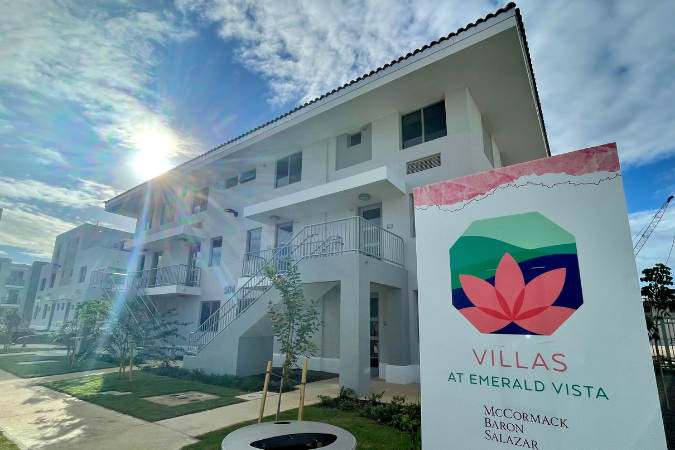5 Things You Need to Know Before Applying for LIHTC Funding
Written By AD&V®ABOUT THE AUTHOR | AD&V® is dedicated to advanced and energy-efficient sustainable architecture & interior design that enhances people’s experience of the world and improves their lives.
The substantial reduction in available housing caused by the destruction of the hurricanes, combined with a wave of displaced residents in need of housing, represents a major obstacle to Puerto Rico’s long-term recovery.
The CDBG-DR Gap LIHTC Program was launched with the purpose of promoting the construction and rehabilitation of homes for families and/or elderly people on the Island, and has since been crucial in the construction of thousands of housing units in Puerto Rico. Here are 5 things you need to know before applying for LIHTC funding for a project in the Island:
1. WHAT IS THE LIHTC PROGRAM
The CDBG-DR Gap for Low Income Housing Tax Credits Program (LIHTC) provides gap funding for properties being developed with low-income tax credits. Financed with funds allocated by the U.S. Department of Housing and Urban Development (HUD), the program distributes federal income tax credits to affordable housing developers through state housing agencies. The developers sell the tax credits to investors to get funding for their projects and for each dollar invested on tax credits, investors save one dollar in taxes.
2. HOW IT WORKS
The LIHTC Program essentially works through three different entities. The entity in charge of supervising the LIHTC Program is the Puerto Rico Department of Housing (PRDOH). They are responsible for managing the CDBG-DR funds assigned to the Island for the recovery of the disasters caused by Hurricanes Irma and María in 2017.The Puerto Rico Housing Finance Authority (PRHFA) on the other hand, administers CDGB-DR funds to encourage affordable multi-family and/or senior rental housing construction through LIHTC project developer financing. Developers then rehabilitate homes through eligible projects for funding under the LIHTC Program.
3. TYPES OF LIHTC PROGRAMS
There are two types of tax credits for the acquisition, rehabilitation, or construction of rental housing for low-income households:
PHASE 1: 9% Tax Credits
For the implementation of the first phase of the program, the Department of Housing and the PRHFA provided economic assistance through CDBG-DR funds to projects that were ready to go with 9% of LIHTC. The 9% tax credits are available for construction or renovations that are not financed with tax-exempt bonds.
PHASE 2: 4% Tax Credits
In September 2020, the Department of Housing and PRHFA announced a new project cycle for LIHTC under the 4% in accordance with the financing cycle of the 2020 ‘Qualified Allocation Plan’ (QAP).In this second phase, $1.8 billion of CDBG-DR funds, in conjunction with LIHTC and other types of funding, will be used to maximize the resources to create projects that meet multiple objectives. The 4% tax credits are available for existing homes, construction, or renovations financed with tax-exempt bonds.
4. LIHTC PROGRAM BENEFITS
The LIHTC Program was described by HUD as “… the most important resource for developing low-cost housing in the United States and Puerto Rico,” as it will benefit low to moderate income communities by increasing the number of affordable homes through new construction or rehabilitation projects.This promotes economic development, creates quality rental housing, and responds directly to the needs for housing by providing financing to viable construction projects. Because of the program, legally established developers or entities that provide rental housing, also benefit from it.Additionally, proposed projects that will be built under the LIHTC Program, take into consideration the use of materials and methods that promote the protection of the environment with the implementation of resiliency measures like EnergyStar® equipment, photovoltaic panels, emergency power generators, security windows, among others.The projects will also include the installation of broadband infrastructure to reduce the digital gap in mixed-income communities. Providing a platform for individuals and families to engage in the digital economy and increase their access to economic opportunities.Furthermore, the LIHTC Program benefits the regional economy by supporting projects in areas that are within reasonable distance of businesses, medical facilities, pharmacies, post offices, supermarkets, public transport and recreational areas of the municipalities.
5. MAKING A POSITIVE IMPACT
At AD&V, we’ve had the opportunity to help build affordable and resilient rental homes in Puerto Rico through the CDBG-DR Gap LIHTC Program. Our most recent project in Caguas, Emerald Vista, is a resilient community where everyone feels safe, connected, and proud. By working on this project, we have seen firsthand, how the LIHTC Program benefits people with low to moderate income living in the Island. Fundamentally, LIHTC Programs accelerate Puerto Rico’s recovery and allow for more people to have a safe and resilient home.

